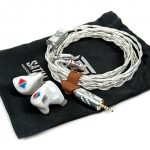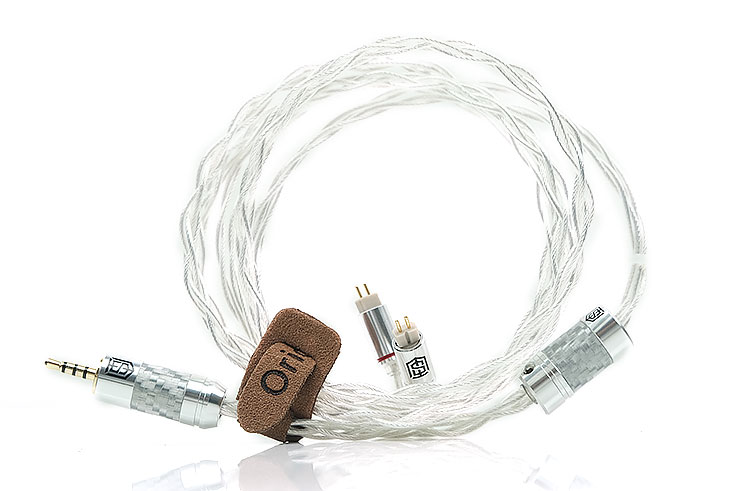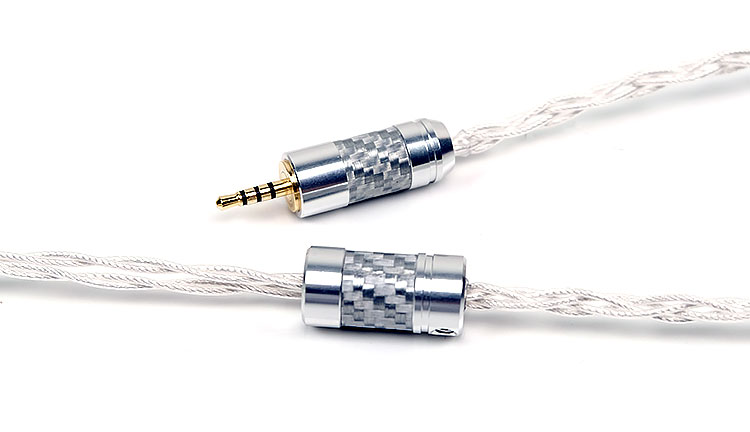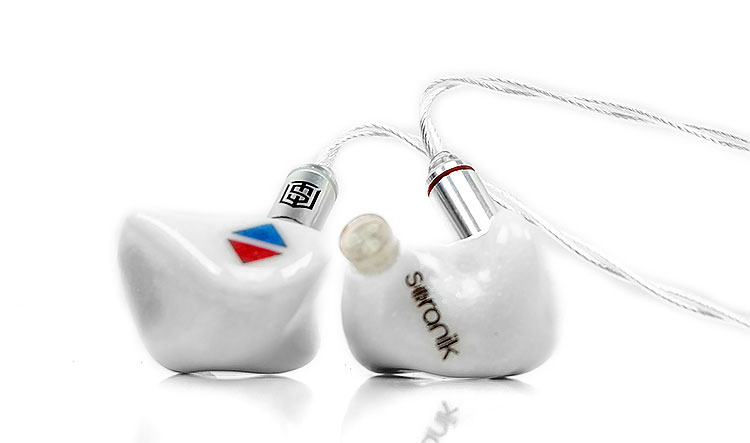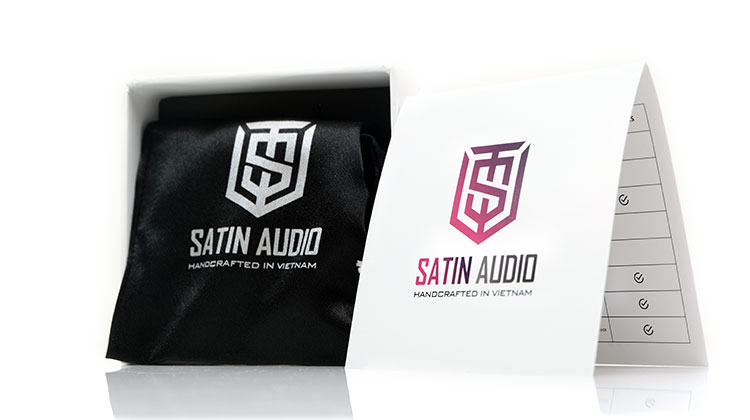The Satin Audio Medusa is a handmade detachable IEM cable and the flagship of their ‘Monster’ IEM cable series. The Medusa is constructed from a 26AWg OCC Pure Silver Type 4 Litz and retails for $209.90.
Disclaimer: The Satin Audio Medusa sent to us is a sample in exchange for our honest opinion. We thank the team at Satin Audio for giving us this opportunity.
To read more about Satin Audio products we reviewed on Headfonics, click here.
Note, this review follows our new scoring guidelines for 2021 which you can read up on here.
We have dipped our toes into the Vietnamese scene a few times now in the last few years. Starting out with Soranik and one of their partner brands, Aya Audio for balanced armature monitor designs in 2017.
This is the first time, however, that we have received a cable for review from Vietnam, and let me tell you this. For the quality, to price ratio, I was not expecting a cable to look and perform as good as the Medusa from Satin Audio.
It is not unknown for Vietnamese brands to really surprise you with their competitive pricing. The Medusa is no different at $209.90 SRP, which is very competitive indeed for Litz Silver builds in the boutique aftermarket cable business these days.
Just a little cute FYI for fact nerds before we move into the nitty-gritty. The ‘S’ in Satin is also sort of a symbol of the generally accepted geographical shape of Vietnam and the core material of Vietnamese traditional Long Dress’s.
Positioning
The Medusa is part of the companies Monster IEM cable series. The Monster Series is their flagship range of 26AWG Type 4 Litz wire of which the Medusa is their only cable in the series using OCC pure silver wire. In fact, it is their only IEM cable using OCC pure silver wire.
They have two other series, Standard and Titan which are much lower in price at sub-$100. The Titan focuses on variations of copper and SPC using a Type 2 Litz build 28AWG wire. The Standard Series is a super-budget sub-$70 range of cables using a Type 1 Litz build with a 30AWG rating.
Materials & Wire
Type 4 Litz
The Type 4 Litz geometry features bundles of twisted wire twisted around a central fiber core and is a fairly advance Litz build for reducing the “skin effect” in electrical wiring.
The skin effect is the tendency of radio frequencies to be concentrated at the surface of the conductor. Litz constructions counteract this effect by increasing the amount of surface area without significantly increasing the size of the conductor.
A well-built Litz cable, in theory, will, therefore, deliver a better high-frequency performance than a standard build cable. It will also be more durable than other cables when flexed and we flex our IEM cables a lot!
On an aesthetic level, more and more builds of this type are turning to Litz also to prevent nasty green oxidization tints that develop on regular non-Litz builds. This cable should stay shiny for life.
Silver & Gauge
26AWG is the sweet spot for the majority of 4-wire builds in the aftermarket cable industry. Combine that with high purity OCC silver you tend to get a nice balance of high conductivity with a low-enough level of high-frequency resistance for a generally transparent signature with excellent dynamic range. It also helps to keep the cable fairly lightweight and flexible compared to much higher gauge wire builds.
Of course, there are tons of purity levels of silver and at $209 you might even think the silver purity levels are not that high. Actually, this does not seem to be the case with the Medusa wire as it is rated somewhere between 6N and 7N which is pretty much class-leading in terms of purity.
6 and 7N basically stand for the purity levels of the OFC silver wire used. This is how purity is defined when acquiring alloying materials. It is not a wholly accurate measure as there are the absolute purity and the common metals basis of purity debates. It is generally taken as an approximation but the N stands for numbers on either side of the decimal point.
In this case, 7 numbers or 99.9999%, which is a pretty high level to achieve. You will see lower purity standards such as 5N and it works in the same manner at 99.999%. The numbers above give you a broader understanding of the entire range used.
Design
Silver with transparent jackets is always such a striking visual and the Medusa is no exception. I am especially pleased with the matching silver and chrome barrels and jack, split and connector ends.
Normally, I am used to seeing those darker carbon fiber print barrels from the likes of EA and Eidolic variants used by Astral Acoustics. This is the first time I have seen the silver carbon fiber printed barrels and they are an excellent complement to the wire and jacket build tone.
The cable can be bought in either 1.2m or 1.5m (this one is 1.2m) depending on your preference and budget. What is noticeable, regardless of length is the slightly different braiding technique used by Satin Audio compared to the likes of Effect Audio and PLUSSOUND.
I am fairly sure the SA insulation is a PE translucent jacket but the braiding throw is a little longer and not quite as tight as something like the Ares II. A long throw makes no difference to me on the aesthetic level. This is still a good-looking cable with consistent braiding regardless.
However, the handling on a long throw braid is a little stiffer. Pure physics determines that when you try to bend them the longer weave is not as flexible and post y-split it has a slight “flyaway’ quality. So, the Medusa is just the marginally stiffer of the two when you bend it.
Terminations
Satin Audio terminations are as wide and varied as the competition and the pricing for some of the more premium terminations are pretty low also. Just watch if you go from 4 to 8-braid in your original build order as this will add around $150 over the base $209 price before you start on the connector options. Still competitive for an 8-wire silver though.
Connectors
As for the connectors you have up to 15 different options with the base 2-pin and MMCX chrome barrels free of charge. These barrels came on our review sample and are a little similar in finish to the EA barrels though just a little wider.
They are also come with small red and white rings at the base of the terminations to determine left and right easily which I quite like. Strain relief is very low-profile and mostly internal to the barrel with only the tiniest hint of rubber extending outwards.
The remaining connectors cover a wide base including Sony, Fitear, ATH, Etymotic, and even JH audio with a bass module included for an additional $57.
Barrels
Satin offers 13 types of jack terminations and 3 different splitter barrels. All splitter barrels are finished in chrome silver which I really like in terms of visuals. The Carbon fiber barrel is the heaviest and biggest but for no additional charge, you can swap to a slightly plainer but much light or smaller micro barrel.
The final one is a 2.5mm extender with a female socket to receive a 2.5mm male socket which will be useful for those who like to use piggy tail adapters. This will set you back an additional $19.95 though.
Jacks
The range of jacks are excellent with the 3.5mm and 2.5mm straight at no extra charge. Our cable comes with the 2.5mm TRRS gold plated straight jack and carbon fiber printed barrel.
It is actually pretty light but quite wide so be careful of that if you are ordering for DAPs and sockets with very narrow jack port panels. You can opt for a mini 2.5mm TRRS though to render width on the barrel fairly moot and this is a zero-cost option also.
Other options include right angle, rhodium plating, 4.4mm and 3.5mm balanced as well as 6.3mm, XLR, and RSA type terminations.
Comfort & Noise
One thing to note is the lack of memory wire on the Medusa which I highly approve of. The build is supple enough to avoid the use of memory wire and indeed the cable rests wonderfully over my ears without a hint of awkward weight or pressure pushing downwards. It will also remain pretty stable once draped over the back of your ear with the heavier barrels acting as a counterweight of sorts.
Again, going back to that 26AWG gauge wire, you do get a really lightweight and pliant cable with zero memory retention. In terms of microphonics, it is the equal of the Ares II for low physical noise on the wire, especially below the splitter. You will get a touch more noise above the splitter once it drops down to that lighter per channel construction but that is fairly normal.
Accessories & Packaging
Satin Audio’s packaging for the Medusa is good quality and very professional looking for the price point. The box is quite small but then it does not need to be any bigger really for a 1.2m IEM cable. Keeping the logistics costs down would be one of the key drivers in going into the overseas market.
The coloring on each cable box is different. The Medusa is more of a silver and gray pastiche whereas the copper and SPC variants will come in a gold and green alternative. There are shades of the Campfire Audio minimalist aesthetic here which is a positive in my book.
Inside you get a small satin black carry pouch (naturally) with the Satin Audio logo in white and the moniker “Handcrafted in Vietnam”. You also get a nice little flip card outlining the key specs of the cable you just bought which is a nice touch.
The cable also comes with a little brown fabric Oriolus branded cable tie which I think gives the otherwise very silvery tone of the ensemble a nice little organic contrast.
Click on Page 2 below for Sound Impressions & Comparisons


